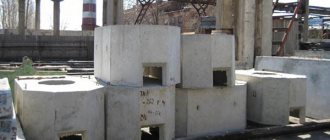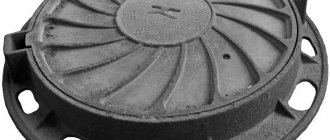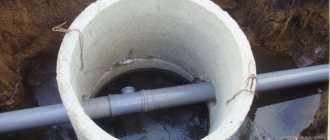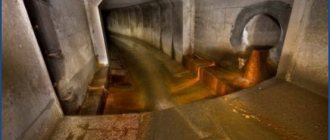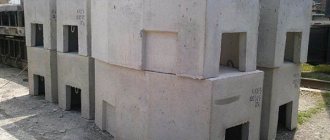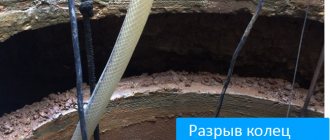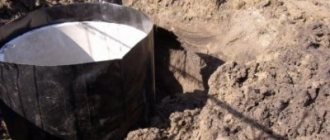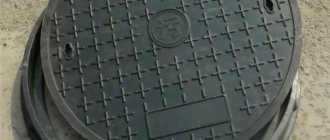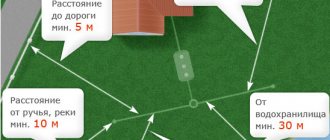| | |
| Picture | Product | Dimensions (cm) | Weight (kg) | Wholesale price (RUB) | Buy | ||
| L | B | H | |||||
| Sewer stairs | |||||||
| Sewer ladder KL-1 | 100 | 41 | 33 | 20 | 1 810 | ||
| Sewer ladder KL-1.5 | 150 | 41 | 33 | 36,5 | 2 715 | ||
| Sewer ladder KL-2 | 200 | 41 | 33 | 43,9 | 3 620 | ||
| Sewer ladder KL-2.5 | 250 | 41 | 33 | 54,7 | 4 525 | ||
| Sewer ladder KL-3 | 300 | 41 | 33 | 59,3 | 5 430 | ||
| Sewer ladder KL-3.5 | 350 | 41 | 33 | 67,6 | 6 335 | ||
| Sewer ladder KL-4 | 400 | 41 | 33 | 75,9 | 7 240 | ||
| Sewer ladder KL-4.5 | 450 | 41 | 33 | 82,9 | 8 145 | ||
| Sewer ladder KL-5 | 500 | 41 | 33 | 91,3 | 9 050 | ||
| Sewer ladder KL-5.5 | 550 | 41 | 33 | 98,3 | 9 955 | ||
| Sewer ladder KL-6 | 600 | 41 | 33 | 108,2 | 10 860 | ||
| Stairs drainage | |||||||
| Drainage ladder VL-1 | 100 | 48 | 14 | 14 | 1 190 | ||
| Drainage ladder VL-1.5 | 150 | 48 | 14 | 20,3 | 1 785 | ||
| Drainage ladder VL-2 | 200 | 48 | 14 | 27 | 2 380 | ||
| Drainage ladder VL-2.5 | 250 | 48 | 14 | 34,4 | 2 975 | ||
| Drainage ladder VL-3 | 300 | 48 | 14 | 38,9 | 3 570 | ||
| Drainage ladder VL-3.5 | 350 | 48 | 14 | 45,6 | 4 165 | ||
| Drainage ladder VL-4 | 400 | 48 | 14 | 50,9 | 4 760 | ||
| Drainage ladder VL-4.5 | 450 | 48 | 14 | 57,4 | 5 355 | ||
| Drainage ladder VL-5 | 500 | 48 | 14 | 64,3 | 5 950 | ||
| Drainage ladder VL-5.5 | 550 | 48 | 14 | 71 | 6 545 | ||
| Drainage ladder VL-6 | 600 | 48 | 14 | 76,3 | 7 140 | ||
| Heating networks ladders | |||||||
| Heating networks ladder LTS-1 | 100 | 50 | 6,3 | 16,7 | 1 410 | ||
| Heating networks ladder LTS-1.5 | 150 | 50 | 6,3 | 25,1 | 2 115 | ||
| Heating networks ladder LTS-2 | 200 | 50 | 6,3 | 33,4 | 2 820 | ||
| Heating networks ladder LTS-2.5 | 250 | 50 | 6,3 | 41,8 | 3 525 | ||
| Heating networks ladder LTS-3 | 300 | 50 | 6,3 | 50,1 | 4 230 | ||
| Heating networks ladder LTS-3.5 | 350 | 50 | 6,3 | 58,5 | 4 935 | ||
| Heating networks ladder LTS-4 | 400 | 50 | 6,3 | 66,8 | 5 640 | ||
| Heating networks ladder LTS-4.5 | 450 | 50 | 6,3 | 75,2 | 6 345 | ||
| Heating networks ladder LTS-5 | 500 | 50 | 6,3 | 83,5 | 7 050 | ||
| Heating networks ladder LTS-5.5 | 550 | 50 | 6,3 | 91,9 | 7 755 | ||
| Heating networks ladder LTS-6 | 600 | 50 | 6,3 | 100,2 | 8 460 | ||
| Stepladders | |||||||
| Stepladder S-1-01 | 90 | 50 | 5 | 9,7 | 1 390 | ||
| Stepladder S-1-02 | 120 | 50 | 5 | 12,9 | 1 860 | ||
| Stepladder S-1-03 | 150 | 50 | 5 | 16,2 | 2 325 | ||
| Stepladder S-1-04 | 180 | 50 | 5 | 19,5 | 2 790 | ||
| Stepladder S-1-05 | 210 | 50 | 5 | 22,7 | 3 255 | ||
| Stepladder S-1-06 | 240 | 50 | 5 | 25,9 | 3 720 | ||
| Stepladder S-1-07 | 270 | 50 | 5 | 29,2 | 4 185 | ||
| Stepladder S-1-08 | 300 | 50 | 5 | 32,4 | 4 650 | ||
| Stepladder S-1-09 | 330 | 50 | 5 | 35,7 | 5 115 | ||
| Stepladder S-1-10 | 360 | 50 | 5 | 38,9 | 5 580 | ||
| Stepladder S-1-11 | 390 | 50 | 5 | 42,1 | 6 045 | ||
| Well brackets | |||||||
| Resistant bracket SK-1 | 25 | 25 | — | 2,9 | 410 | ||
| Thrust bracket SK-1 with fastening | 25 | 25 | — | 4,1 | 990 | ||
| Suspension bracket SK-2 Ø22 A1 | 25 | 25 | — | 3,6 | 890 | ||
| Suspension bracket SK-3 Ø22 A1 | 25 | 25 | — | 5,1 | 1 120 | ||
| Suspension bracket SK-4 Ø22 A1 | 75 | 25 | — | 8,7 | 1 820 | ||
| Suspension bracket SK-5 Ø25 A1 | 34 | 25 | — | 8,7 | 980 | ||
| Suspension bracket SK-6 Ø25 A1 | 37 | 25 | — | 8,7 | 1 120 | ||
| Fastening bracket GS-1 Ø22 A1 | 20 | 8 | — | 1,6 | 410 | ||
| Fastening bracket GS-2 Ø22 A1 | 20 | 8 | — | 1,6 | 410 | ||
| Fastening bracket GS-3 Ø22 A1 | 20 | 9 | — | 1,6 | 415 | ||
| Fastening bracket GS-4 Ø22 A2 | 20 | 10 | — | 1,6 | 415 | ||
* It is possible to produce stairs of any length with a step multiplicity of 10 cm.
When arranging sewer, drainage systems and heating mains, it is of great importance to provide access to the collector, pipe, well or heating main. Well ladders are used for this purpose.
.
Requirements for sewer stairs
Underground structures operate under specific conditions. Equipment that meets certain requirements is used for maintenance. When constructing drainage stairs, the following characteristics are taken into account:
- Reliability and durability. The height of the shaft often reaches 5 m. All parts must withstand increased loads when lowering or lifting people and special equipment.
- Material. According to GOST standards, structures can be made of plain or stainless steel. The second option is considered more reliable. Stainless steel is insensitive to moisture. The diameter of the reinforcement used to construct the stairs must exceed 2.5 cm.
- Weight. Regulatory requirements regarding the weight of ladders for wells correspond to structures weighing 25-100 kg with a length of 1-6 m.
- Oxidation resistance. Constant exposure to conditions of elevated temperature and humidity leads to rapid destruction of the metal. Therefore, it is recommended to equip wells with stainless steel ladders. Simple metal structures need to be treated with anti-corrosion compounds. Priming, galvanizing, and painting with metal varnish are used.
- Life time. Replacing a ladder in a deep well takes a long time. Descent into a small-diameter shaft is associated with some inconveniences. The use of durable ladders helps eliminate downtime in the maintenance of sewer lines.
Purpose and installation of sewer wells
In order to ensure access to equipment and the most important components of systems during their construction, a certain number of inspection wells is required. The photo below shows one of these wells.
The structure consists of concrete rings, with a base plate and a cast iron hatch installed on top. Inspection wells can often be found on the roadway or sidewalk.
There are several types of inspection wells, differing in purpose. They are placed in places where the pipeline turns (rotary), its level changes by a height of more than 0.5 m (changes), in places where intersections or branches form (nodal).
Above large collectors, special wells with a larger diameter are usually installed. This is due to the need to move large cleaning equipment to the pipeline.
To move around the well and move the necessary tools and devices, special ladder structures are used.
The photo below shows one of these structures.
Types of well stairs
To descend into sewer wells, 3 types of structures are used:
Easy to use.
- Portable. Convenient well stepladders do not require permanent installation. The depth of some collectors reaches 10 m. The ladder must be of suitable length. The sewer system does not require too frequent inspection. Portable products are suitable if you need to go down the mine no more than once every 3 months. A length of 1-5 m and a width of steps of 35 cm will be sufficient. The weight of the structure is determined by the material of manufacture.
- Stationary. They are installed at the well construction stage and have unlimited length. The remaining parameters are selected taking into account the structure of the mine. The weight of the ladder is determined by the depth of the collector. The weight of the structure is most often 20-150 kg. The width of the step is 35-45 cm. The products are constructed from steel, wood, and composite materials.
- Foldable. Made from light metal alloys, such as aluminum. This is explained by the need for compact storage outside the well and ease of transportation to the place of use. The length of one section is 1-2.5 m. The unfolded dimensions reach 6 m. The folding ladder weighs no more than 25 kg.
Safety requirements for operation
Despite a fairly large number of advantages, such structures can be dangerous if they are made without relying on the basic safety requirements:
- In order to avoid restrictions on the use of the ladder in the future, it is necessary that the maximum supported weight of the product reaches 360 kg. This will ensure that the structure can be used by adults of a large weight category.
- If the task is to make a mobile ladder for descending into a well, then its total weight should not exceed 20 kg, which will be determined by the dimensions (width and length) of the product, as well as the materials used.
- To avoid direct contact of the steps with the shaft wall, the structure is equipped with special stops, the length of which can vary between 11-22 cm.
- The steps can have a round or rectangular cross-section. In the first case, the minimum acceptable value of the parameter corresponds to 2.6 cm.
- The steps should be located at a distance sufficient for a step (no more than 35 cm).
- The rope ladder for servicing the well should not be narrower than 25 cm. The recommended length for trouble-free operation is 15 m.
- The steps should have smooth corners, as sharp edges can injure a person.
As you can see, it is quite possible to create a simple and lightweight design that will not take up much space during storage and will be operated without unnecessary difficulties.
Types of sewer stairs
To descend into sewer wells, different types of stairs are used, differing in structure, material of manufacture, and installation method.
Tap
For inspection wells of the water supply system, the VL-2 drainage design is used. The product is made of stainless steel and is fixed to the neck and walls of the manifold. Length is 1.82 m, width - 45 cm, weight - 20 kg. The upper part is equipped with hooks that hook onto the edge of the well. Fastening elements are installed along the entire length of the stepladder.
Sewer
Sewage evaporation is constantly present in sewer wells. An aggressive environment negatively affects metal parts. In such cases, specially treated structures are installed. The steps are fixed by three guides, which allows you to press the ladder against the walls of the casing.
With platform
This ladder is installed in a large diameter well. This allows the worker to stand at the bottom of the collector. At the bottom of the product there is a platform that prevents your feet from touching the bottom of the well.
Rules for working in wells
In cases where well maintenance is carried out on your own, the following rules should be followed:
- It is prohibited to carry out work in the depths of the mine alone. A person going down should be supported on the surface by 2-3 physically strong assistants.
- Before starting work, a communication system and signs are agreed upon. In some cases, this really saves lives. A mobile phone in this case is a bad option, because... Anything can happen below, and it’s not a fact that it will catch, or it might just fall out. It is also important to agree on the time intervals for receiving signals from below. If a person does not give the signal at the agreed time, helpers from above must lift him up with a safety rope.
- The depth of water in the mine and the height of the layers at the bottom are preliminarily determined. This can be done using a long pole, lowering it all the way into solid soil (when pressed, it should not go deeper). This will protect the worker from getting stuck in dangerous slurry.
- Before going down, it is necessary to determine the oxygen level in the depths of the mine. To do this, install any open flame source in the above container. You need to act extremely carefully so that the fire is not extinguished by water or air currents. If the attenuation occurred due to oxygen deficiency, it is prohibited to descend into such a well without an oxygen mask. A similar problem can be indicated by the presence of a large amount of organic residues in the samples taken.
- Reconnaissance of the state of water or bottom soil is carried out. To do this, attach a small container to the end of the pole. After extraction, the samples are checked for the smell of hydrogen sulfide and methane.
- There is no need to rush through completing all the procedures described above before descending into the well. Any emergency situation cannot be more expensive than human life.
- It is forbidden to go down into the well without special protective clothing. This is especially true for helmets, masks, rubber boots and gloves. If there is an unpleasant odor, be sure to use a respirator.
- Whatever the complexity of the operation, it is important to remember that the well is very dark. Therefore, it is necessary to organize convenient lighting for the employee. The most practical option is a rechargeable headlamp. In this case, the hands remain free for activity, and the beam of light will always be directed in the same direction as the eyes.
- Make sure that the lowering device is securely fastened. If we are talking about a stationary ladder or brackets, they must be periodically checked for integrity. Prefabricated structures are installed strictly according to the instructions.
- A prerequisite for descending into a well shaft is the presence of a safety rope. As a rule, it is attached to a mounting belt. This simple device will make it possible to pull a person out if for some reason he loses the ability to do this on his own. This could be injury, loss of consciousness due to oxygen deficiency, gas poisoning, etc.
Materials for production
Lots of materials.
The following materials are used for the manufacture of well ladders:
- Metal. This is a reliable and durable material. Proper processing increases the service life of the product. Before installation, several layers of anti-corrosion paint are applied to the metal elements. Disadvantages include heavy weight and lack of mobility. A product 1 m long will weigh at least 20 kg.
- Tree. Such structures are used by owners of private houses. Utility workers refuse to use wooden stairs. When exposed to high humidity, wood quickly deteriorates. The advantages of this option are ease of manufacture and low cost of material. Disadvantages: short service life, fragility.
- Ropes. These ladders are used in emergency situations. The products are portable. The disadvantage is instability.
- Stainless steel. Expensive material is used to create reliable, durable structures. A stepladder made of such metal lasts longer than the well itself.
How to make a ladder for a well with your own hands
You can do it yourself.
Any structure can be made with your own hands. To do this, you need to be able to handle wood or metal and use a welding machine.
Metal
To make a metal structure, perform the following steps:
- Purchase smooth fittings or thin pipes and corners. The calculation of the amount of materials is carried out after determining the depth of the shaft.
- Cut parts to required sizes. Vertical guides are laid on a flat surface parallel to each other.
- The steps are laid out so that even rectangles are formed. The distance between the parts is 35 cm. The length of the step is 45 cm. The reinforcement is cut with a grinder. The workpieces are secured by arc welding.
- Weld the top hooks made from reinforcement. They should hook onto the edge of the collector.
- Treat the metal with a primer and apply paint. Existing traces of rust are removed with a stiff brush.
Wooden
A wooden well ladder is made as follows:
- The bars are cut 5x5 cm. Guides and steps are formed from them independently.
- The bars are laid on a flat surface. Having measured the rectangle, draw out the steps. Cut out sections 30-35 cm long.
- The crossbars are laid according to the drawn up diagram. They are fixed with wood screws. Do not use nails that can damage the wood. Hooks are not used for fastening wooden stairs. Fasteners are installed along the length of the product.
- The structure is coated with an antifungal compound. Anti-corrosion paint is not used in this case. The tree is first affected by a fungus, after which it begins to rot.
rope
A rope stepladder can have metal or wooden steps. They do it like this:
Equal distance.
- Prepare a climbing rope. You will also need wooden crossbars 35 cm long.
- Holes are made in the steps, the dimensions of which correspond to the diameter of the rope.
- The twine is tied and cut into 2 parts. Make 1 knot in the guides at an equal distance from the middle.
- Both ropes are inserted into the holes of the step. The part is advanced to the knot, and another one is knitted on top.
- A new knot is tied at a distance of 35 cm. Install the next stage.

